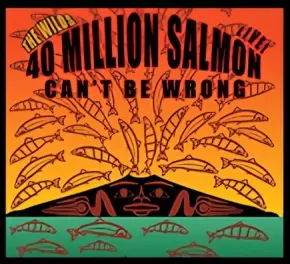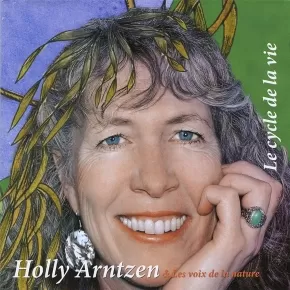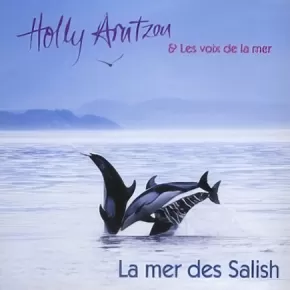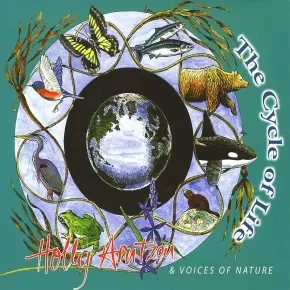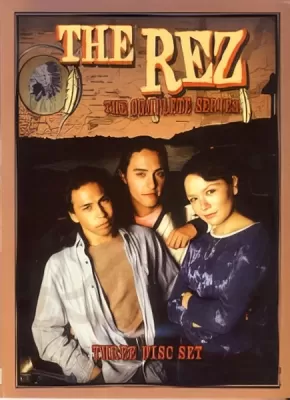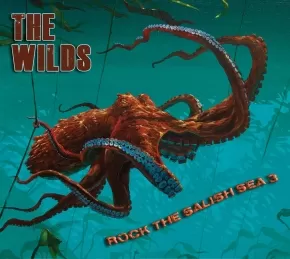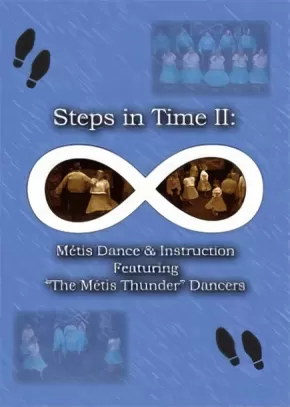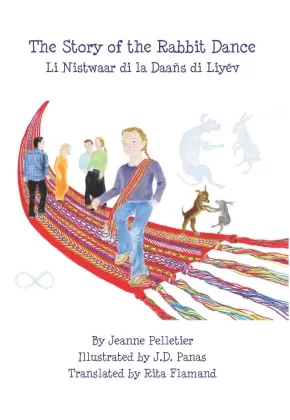
Media
1
-
10
of
10 Results;
Sort By
DVD: The Art of Being Métis - Through the Teachings of the Canoe
$79.95
ISBN / Barcode: 9781926852171
Synopsis:
Synopsis:
The Art Of Being Métis is a ten-part documentary (150 min) that tells of being Métis through the teachings of the traditional birch bark canoe. This includes the history, construct, use, as well as traditional harvesting, music, food and even healthful plants and medicines. Follow along and see a birch bark canoe envisioned, the materials harvested, all the stages of the build and finally launch. Each stage is filled with teachings about the land and the water, about taking what you need, not what you want, and respecting Mother Earth. This movie has been featured at the McMichael Art Gallery and The Montreal Indigenous Film Festival.
This documentary film follows Mahigan through all the facets of creating a traditional birch bark canoe. Much more than a how-to film, the viewer will be taken on a spiritual journey that contemplates the very close relationship the people of the Métis Nation and all indigenous peoples have, with Mother Earth. Mahigan will discuss the meaning of being Métis as well as what living a Métis lifestyle means. The viewer will also learn about the language, customs, culture, food and music of the Métis People. The Métis Nation is recognized by The United Nations.
Indigenous Peoples see themselves as an important part of nature, but not more or less important than any other creature in nature. A common respect for all living things and Mother Earth are central themes within indigenous cultures throughout the world. Indigenous peoples were the first conservationists and are leaders in earth stewardship today.
Mahigan shares many stories and teachings through the various parts of the creation of his birch bark canoe. From the selection and harvesting of the materials to the shaping of those materials into a finished canoe, viewers will learn about Métis and indigenous culture and perhaps even a little about themselves.
Divided into ten segments:
- The Blueprint for the Canoe...jiimaan (13:34 min.)
- Harvesting Birch Bark (11:03 min.)
- Harvesting Cedar (19:50 min.)
- Roots and Gum (21:24 min.)
- Finding Balance (11:24 min.)
- Challenging Times (16:41 min.)
- Back to Balance (20:47 min.)
- Patience (13:51 min.)
- The Art of the Canoe (15:38 min.)
- The Canoe is Born (10:22 min.)
Educator Information
This edition includes PPR (Public Performance Rights) suitable for classrooms, organizations and theatres fundraisers and more.
Additional Information
DVD format, 2.01" x 2.94" | Feature-length documentary
CD: 40 Million Salmon Can't Be Wrong (2 in stock, out of print)
$20.00
ISBN / Barcode: 628855001517
Synopsis:
Synopsis:
40 Million Salmon Can’t Be Wrong weaves together songs, stories, art images and science in an electrifying stage show that helps people understand how we can bring back our wild salmon to historical levels of abundance. Acclaimed singer/songwriters Holly Arntzen and Kevin Wright, are joined onstage by the Wilds band (Shawn Soucy-drums, Brian Newcombe-bass, Bill Sample-keyboards, Andreas Schuld-guitar), renowned storyteller and artist Roy Henry Vickers and ocean ecologist Russ George.
The collapse of wild salmon runs is closely tied to the collapse of ocean plankton pastures. This was profoundly demonstrated by the eruption of Kastochi volcano in 2008, its dusting of the ocean pastures with mineral-rich volcanic ash, and the return of 40 million sockeye to the Fraser River in 2010.
Authenticity Note: Some, but limited, Indigenous contribution, such as from artist Roy Henry Vickers.
CD: Le Cycle De La Vie
$20.00
ISBN / Barcode: 778224192329
Synopsis:
Synopsis:
Les chansons du cycle de la vie/Recyclage CD ont été traduits en français par Sylvain Archambault, et réalisée par des étudiants de l'Ecole Porter Street à Vancouver, Ecole Aylmer/St Marks à Gatineau, au Québec, et de l'Ecole St Luc à Calgary.
Le musicien canadien et auteur-compositeur, Holly Arntzen, découvert à un âge précoce une passion pour la musique et du spectacle. Après des études de cor français classique en Tchécoslovaquie, elle tourna son attention à l'utilisation de ses talents vocaux incroyables au service de la sensibilisation du public à propos de l'environnement et de la nécessité pour nous tous de la protéger.
The songs from the Cycle of Life/Recycle CD have been translated into French by Sylvain Archambault, and performed by students from Ecole Porter Street in Vancouver, Ecole Aylmer/St Marks in Gatineau, Quebec, and Ecole St Luke in Calgary.
Canadian musician and songwriter, Holly Arntzen, discovered at an early age a passion for music and performing. After studying classical French horn in Czechoslovakia she turned her attention to using her incredible vocal talents in the service of raising public awareness about the environment and the need for all of us to protect it.
CD: La Mer Des Salish (2 in Stock)
$20.00
ISBN / Barcode: 778224162223
Synopsis:
Synopsis:
Les chansons de la mer Salish CD ont été traduits en français par Marie Payette chutes et enregistrées par 400 étudiants à l'Ecole Pauline Johnson à West Vancouver . Le CD a été lancé lors d'un concert triomphal avec Holly et la bande de rêve au Théâtre Centennial de North Vancouver. Tout le monde chantait "Continuer de chanter la mer des Salish !" Un soutien supplémentaire est venue de Canadian Parents for français.
The songs from the Salish Sea CD were translated into French by Marie Payette Falls and recorded by 400 students at Ecole Pauline Johnson in West Vancouver. The CD was launched at a triumphant concert with Holly and the Dream Band at the North Vancouver Centennial Theatre. Everyone was singing: “Continue de chanter la mer des Salish!” Additional support came from Canadian Parents for French.
CD: The Cycle of Life
$20.00
ISBN / Barcode: 778224162322
Synopsis:
Synopsis:
Orcas, bears, salmon, snakes, bison, frogs, songbirds, turtles, cedar trees and many other organisms at risk inhabit these songs, which are performed by Holly and the Dream Band, along with 2800 students from nine schools in Victoria and Vancouver. Orca Baby was written in response to the question: How do you explain extinction to a baby?
Endangered Species points out that humans like to live in the same places as wildlife…which is why so many of them are at risk. Salmon Circle celebrates the ancient cycle of life that has sustained ecosystems in the Pacific Northwest for millennia. Landfill Blues is a raunchy anthem to recycling, reducing, refusing…and to the worms and wasps that do the dirty work of biological decomposition. Recycling a beverage container is an action within the power of a child that helps endangered species.
DVD: The Rez
$38.95
ISBN / Barcode: n/a
Synopsis:
Synopsis:
Based on characters first introduced to international audiences by W.P. Kinsella's acclaimed collection of short stories Dance Me Outside, and further entrenched by Bruce McDonald's witty, award winning theatrical feature of the same name, THE REZ continues its unfiltered look at life on a First Nations reservation through the lives of Silas Crow (Ryan Black), Frank Fencepost (Darrell Dennis) and Sadie Maracle (Jennifer Podemski), three smart teenagers with more attitude than even they can handle. Shepherded along by executive producer Norman Jewison, featuring a theme by award-winning singer Susan Aglukark and appearances by Adam Beach (Flags of Our Fathers, Windtalkers, Dance Me Outside), THE REZ is a unique dramedy that delivers a sweet series of tales from the nineteen year old perspective of Silas as he tells of his life, his friends, his family, and the world of the Kidabanesee Reserve in northern Ontario.
CD: Rock the Salish Sea
$20.00
Artists:
ISBN / Barcode: 830159018607
Synopsis:
Synopsis:
This CD includes 15 songs about the Salish Sea.
When listening or singing to this CD, think about the Salish Sea Marine Survival Project: a massive scientific undertaking to research why runs of Chinook, Coho and Steelhead have decreased to one-tenth of past peak levels over the past 20 years in the Salish Sea. The Project involves more than 150 scientists and technical staff from more than 40 federal and state agencies, First Nations, universities, industry and non-profit organizations from Canada and the United States. The coordination is being conducted by two non-profits: the Seattle-based Long Live The Kings and the Vancouver-based Pacific Salmon Foundation.
Find out more here: marinesurvivalproject.com
DVD: Métis Women’s Traditional Arts Series
$24.95
ISBN / Barcode: n/a
Synopsis:
Synopsis:
Grade Level: All Ages
Narrators: Penny Condon, Anna Flaminio, and Cheryl Troupe
To showcase and celebrate the artistic talents of Métis women, the Gabriel Dumont Institute produced The Métis Women’s Traditional Arts Series. This DVD contains the four-video series, which provides in-depth instruction and direction in the production of various forms of Métis cultural expression.
Aen Kroshay aen tapee avec mi gineey: Métis Hooked Rugs
Margaret Harrison, and her mother, Adeline Pelletier dite Racette, provide the viewer with step-by-step instructions on how to make a hooked rug. As well, Margaret and Adeline share their stories about living on a road allowance in the Qu’Appelle Valley in southern Saskatchewan.
Mashnikwawchikun avec la sway di fil: Métis Silk Embroidery
With instruction from Margaret Harrison, viewers have the opportunity to learn basic embroidery stitches, and receive direction in working with patterns, designs, needles, and fabrics. Margaret also shares her experiences and thoughts on the importance of preserving and promoting this traditional Métis art form.
En saencheur flechey: Métis Fingerweaving
Combining Aboriginal fingerweaving techniques with European materials, the sash remains an integral and highly symbolic aspect of Métis identity. In this video, Penny Condon provides fingerweaving lessons to grade seven and eight students from St. Frances School in Saskatoon, Saskatchewan.
Our Shared Inheritance: Traditional Métis Beadwork
This documentary discusses the Métis beading tradition of Cumberland House, Saskatchewan, and centres on Isabelle Impey and her efforts to preserve Métis beadwork. It also provides instructions on how to bead and make moccasins.
DVD: Steps in Time II - Métis Dance & Instruction
$25.00
Artists:
Text Content Territories:
Indigenous Canadian; Métis;
ISBN / Barcode: 252259000113
Synopsis:
Synopsis:
Grade Level: All Ages
Choreographer: Jeanne Pelletier
“The Métis Thunder” Dancers: Jeannine Pelletier-Banin, Paul Banin,
Kim Kovacs, Wilfred Burton, Erin Kramer, Russ Fayant, Michael Racette,
Derek Racette, Megan Shiplack, and Nicole Morrow
Music: Brian Sklar, Joe Schultz, Wayne Kuntz, and Garry Lepine
Producer/Director: Don List, Birdsong Communications
Format: DVD, Approximately 70 minutes
Jeanne Pelletier’s Steps in Time II instructs people of all ages the intricate steps of the “Red River Jig”, and square dancing moves and holds. It includes three reels of the “Quadrille” and “la danse du crochet.” A conversation with Jeanne outlines her history as a dance instructor and caller, and why dance is important. Also included on this DVD is the original Steps in Time from 1989, which teaches dancers the “Duck Dance,” some basic Métis dance steps, fancy jig steps, and the “Rabbit Dance.”
The Story of the Rabbit Dance - Motion DVD
$10.00
ISBN / Barcode: 252259002278
Synopsis:
Synopsis:
In this charming story for young children, Métis trapper Jacques witnesses the creation of the “Rabbit Dance.ˮ Written by Jeanne Pelletier, illustrated by J.D. Panas, and translated in Michif-Cree by Rita Flamand.
This DVD includes the motion book with English and Michif narrations read by Jeanne Pelletier. The DVD also includes the option to go through each illustration at your own pace.
PDFs of the story in English and in Michif, with thumbnails of the illustrations to easily follow along with the DVD, are available on The Virtual Museum of Métis History and Culture: http://www.metismuseum.ca/browse/index.php/13109.
Lesson plans are included in the resource, Bringing Métis Children’s Literature to Life: Teacher Guidebook for GDI Publications available for free download at https://www.metismuseum.ca/resource.php/13827
Educator Information
Themes: Family, Ways of Living, Trapping, Dance: "Rabbit Dance, "Danse du Crochet", Traditional Métis Lifestyles, Gatherings
Sort By



